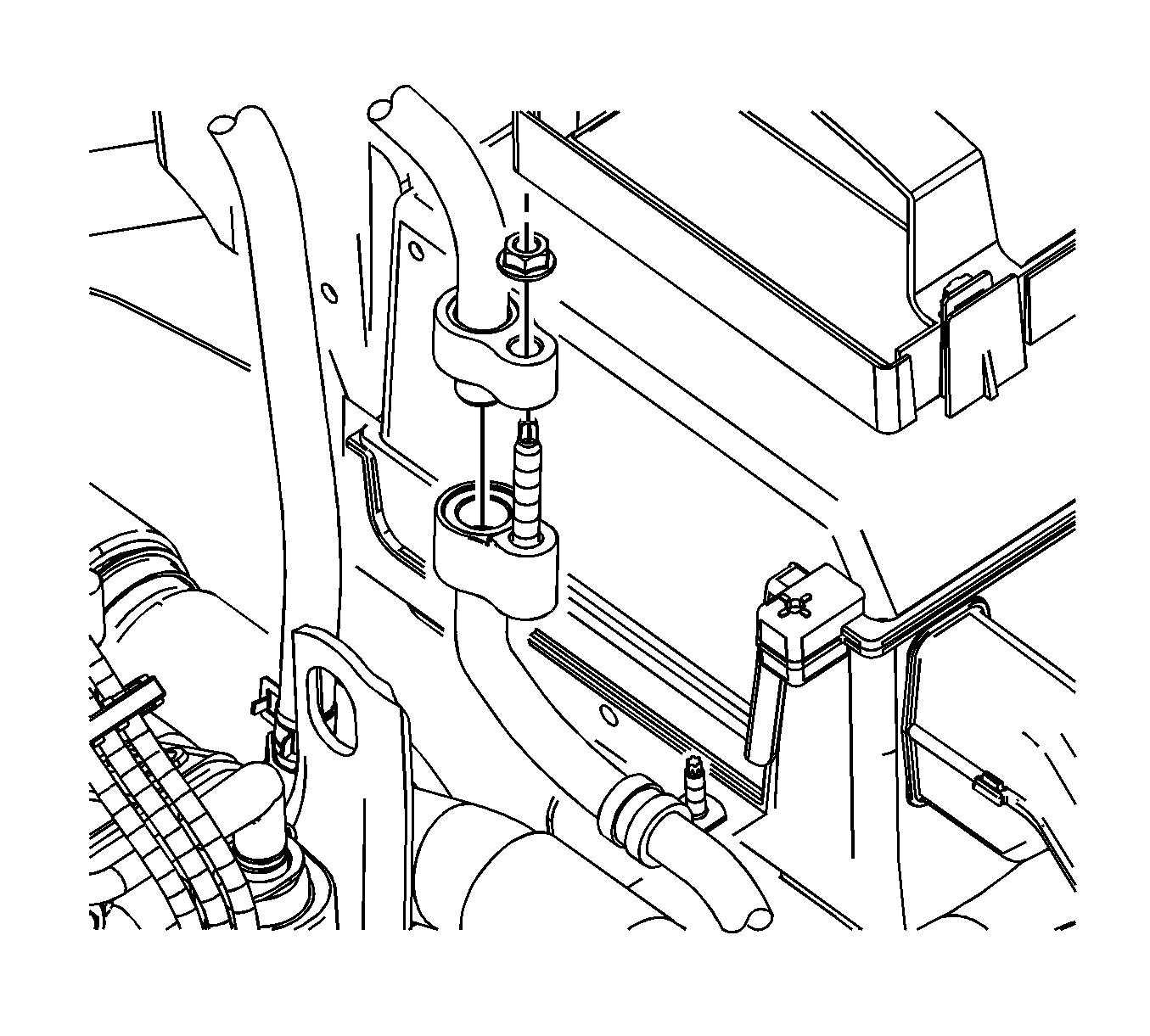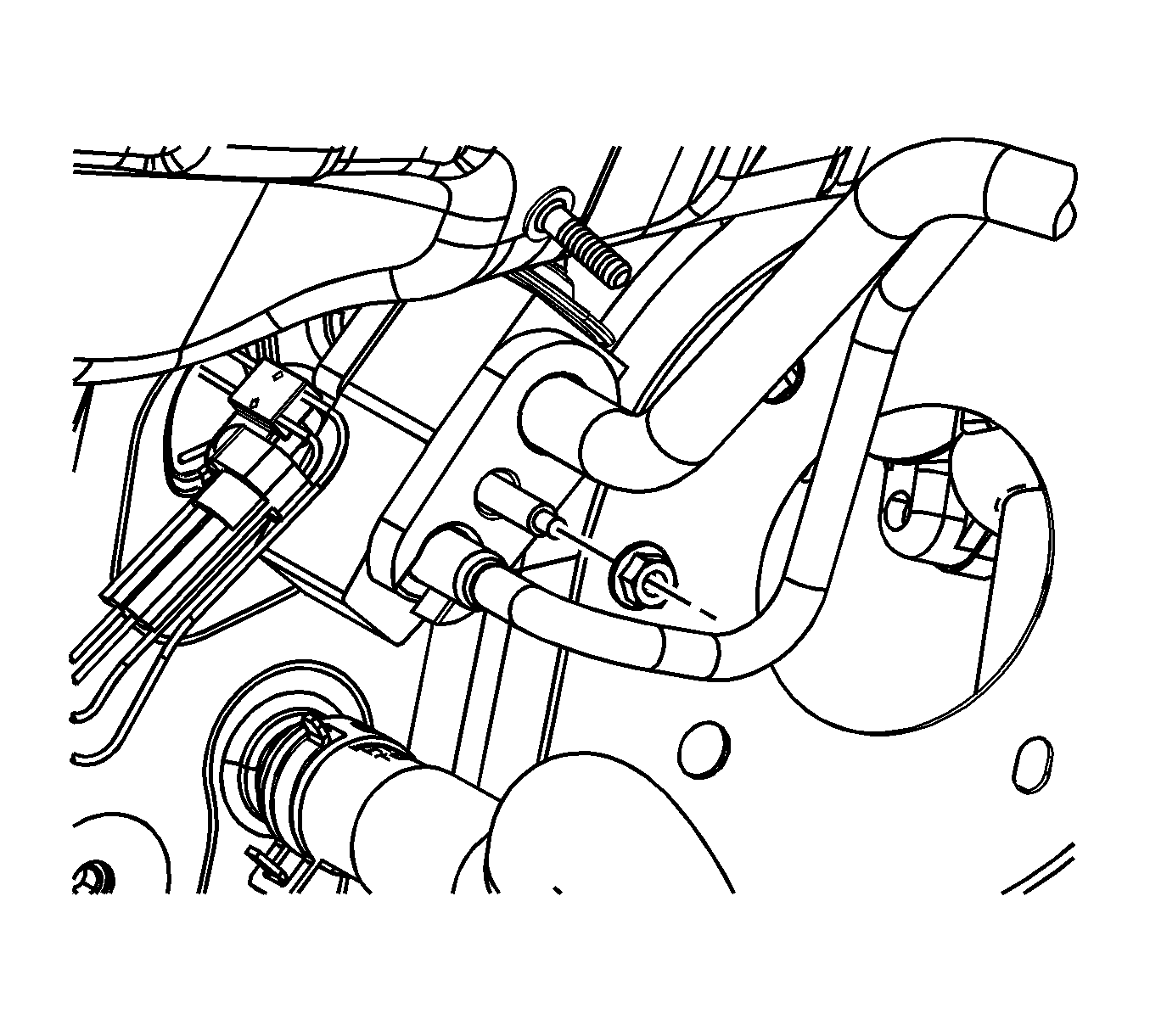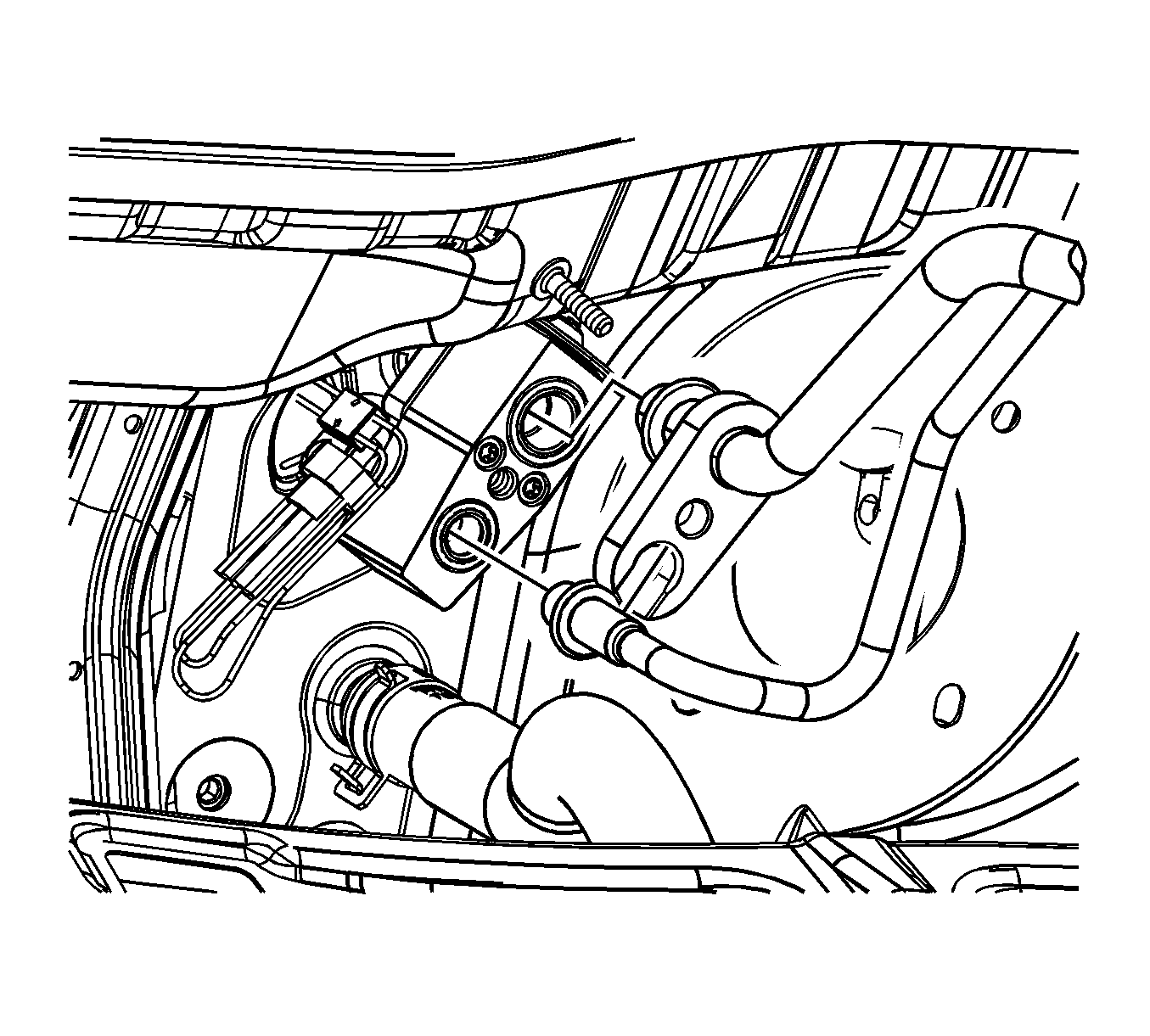Evaporator Outlet Hose Replacement First Design
Tools Required
J 39400-A Halogen Leak Detector
Removal Procedure
The first design can be identified by the attachment method of the evaporator outlet hose and the liquid line to the Thermal Expansion Valve (TXV) . They are retained to the TXV independently using nuts.
- Recover the refrigerant. Refer to Refrigerant Recovery and Recharging .
- Remove the evaporator outlet hose nut from the evaporator outlet hose.
- Remove the evaporator outlet hose from the compressor hose.
- Remove the evaporator outlet hose nut from the thermal expansion valve (TXV).
- Remove the evaporator outlet hose from the TXV.
- Remove evaporator outlet hose from the vehicle.
- Remove and discard the sealing washers from the evaporator outlet hose and the compressor hose. Refer to Sealing Washer Replacement .
- Install protective caps to the TXV and the compressor hose to prevent contamination and desiccant saturation.


Installation Procedure
- Remove the protective caps from the TXV and the compressor hose.
- Install new sealing washers to the evaporator outlet hose and the compressor hose. Refer to Sealing Washer Replacement .
- Install the evaporator outlet hose to the TXV.
- Install the evaporator outlet hose nut to the TXV.
- Install the evaporator outlet hose to the compressor hose.
- Install the evaporator outlet hose nut to the evaporator outlet hose.
- Recharge the A/C system. Refer to Refrigerant Recovery and Recharging .
- Test the affected A/C joints for leaks using J 39400-A .

Notice: Use the correct fastener in the correct location. Replacement fasteners must be the correct part number for that application. Fasteners requiring replacement or fasteners requiring the use of thread locking compound or sealant are identified in the service procedure. Do not use paints, lubricants, or corrosion inhibitors on fasteners or fastener joint surfaces unless specified. These coatings affect fastener torque and joint clamping force and may damage the fastener. Use the correct tightening sequence and specifications when installing fasteners in order to avoid damage to parts and systems.
Tighten
Tighten the nut to 16 N·m (12 lb ft).

Tighten
Tighten the nut to 16 N·m (12 lb ft).
Evaporator Outlet Hose Replacement Second Design
Tools Required
J 39400-A Halogen Leak Detector
Removal Procedure
The second design can be identified by the attachment method of the evaporator outlet hose and the liquid line to the Thermal Expansion Valve (TXV) . They are retained to the TXV as a pair using a single nut.
- Recover the refrigerant. Refer to Refrigerant Recovery and Recharging .
- Remove the evaporator outlet hose nut from the evaporator outlet hose.
- Remove the evaporator outlet hose from the compressor hose.
- Remove the evaporator outlet hose and liquid line retainer plate nut from the TXV.
- Remove the evaporator outlet hose and liquid line from the TXV.
- Remove evaporator outlet hose from the vehicle.
- Remove and discard the sealing washers from the evaporator outlet hose and the compressor hose. Refer to Sealing Washer Replacement .
- Install protective caps to the TXV and the compressor hose to prevent contamination and desiccant saturation.



Installation Procedure
- Remove the protective caps from the TXV and the compressor hose.
- Install new sealing washers to the evaporator outlet hose, liquid line, and the compressor hose. Refer to Sealing Washer Replacement .
- Install the evaporator outlet hose and the liquid line to the TXV.
- Install the evaporator outlet hose and the liquid line nut to the TXV.
- Install the evaporator outlet hose to the compressor hose.
- Install the evaporator outlet hose nut to the evaporator outlet hose.
- Recharge the A/C system. Refer to Refrigerant Recovery and Recharging .
- Test the affected A/C joints for leaks using J 39400-A .


Notice: Use the correct fastener in the correct location. Replacement fasteners must be the correct part number for that application. Fasteners requiring replacement or fasteners requiring the use of thread locking compound or sealant are identified in the service procedure. Do not use paints, lubricants, or corrosion inhibitors on fasteners or fastener joint surfaces unless specified. These coatings affect fastener torque and joint clamping force and may damage the fastener. Use the correct tightening sequence and specifications when installing fasteners in order to avoid damage to parts and systems.
Tighten
Tighten the nut to 20 N·m (15 lb ft).

Tighten
Tighten the nut to 16 N·m (12 lb ft).
